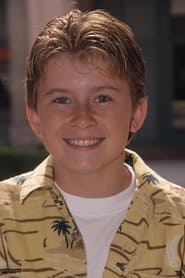
Ask Your Own Question
What is the plot?
An egg yolk sits under a syringe as the film opens; a green serum is injected and the yolk splits cleanly to produce a duplicate. The camera then drifts to the Hollywood Walk of Fame, lingering on the star of Elisabeth Sparkle, once a household name for her long-running aerobics show. Fans cluster around the plaque; later, the same star sits tarnished as Elisabeth becomes less relevant. On her fiftieth birthday, she walks into the studio of Sparkle It Up and quietly endures the humiliating conversation in which Harvey, the network president, informs her that she is being let go because of her age. He eats lavishly at lunch and speaks patronizingly as he severs her connection to the show.
Driving home, Elisabeth sees workers dismantling her enormous billboard and becomes distracted. Her car veers; she crashes violently and ends up in a hospital. During a routine checkup, a young nurse slips a flash drive into her coat pocket and whispers that Elisabeth is a "perfect candidate." The flash drive contains an advertisement for something called The Substance: a clandestine treatment that promises a person could inhabit a younger, "more perfect" version of themselves. A disembodied voice explains that the transformation produces two linked bodies that must alternate consciousness every seven days without exception. The one who is young must receive daily injections of a stabilizing fluid drawn from the older body to remain intact. The voice warns the user that the two are the same being: "they are one."
Lonely and desperate for the life she once had, Elisabeth calls the number on the drive, gives her information, and is told only to show up at an anonymous address. She retrieves an ID card, finds a deposit box down a shadowed alley, and opens it to reveal a single-use vial of a green Activator serum and an instruction sheet. Back in her apartment, naked and shaking, she injects the Activator. Her muscles convulse; a jagged incision splits her back and a young woman emerges from the slit. The newcomer sews the wound and administers a clear Stabilizer to both bodies, explaining in curt terms that the new body must be maintained by taking daily stabilizer doses that are withdrawn from the original, unconscious body. The young woman adopts the name Sue.
Within days Sue steps into Elisabeth's public life. At the studio Harvey, impressed by the youthful energy, hires her as Elisabeth's replacement. Sue moves with a different stride, commands cameras, and revels in adulation. She constructs a hidden room in Elisabeth's bathroom to conceal the older woman's inert body between cycles. A neighbor complains about running water and later, when he sees Sue's younger appearance, tries to flirt and is rebuffed. Sue's first week is heady; she parties, attracts casual lovers and embraces the attention that had been denied to Elisabeth.
Elisabeth, meanwhile, begins to unravel. She watches her former life on television and grows resentful as Sue's star rises. Food, alcohol and despair consume her; she binges and spends hours hunched over a French cookbook Harvey had given as a condescending gift. An older man in a diner notices a birthmark on her arm and warns her that younger selves sometimes "eat away at" their originals; his words terrify her and she flees. A persistent fan from her past, Fred, tracks her down and asks her out; she prepares to go on the date but freezes, sees Sue's billboard out her window, obsessively reapplies makeup and then cancels at the last moment, leaving Fred waiting and crushed.
Sue tests the system's limits. One night she brings a man named Troy back to Elisabeth's apartment only hours before the scheduled switch. When the young body begins to bleed from the nose--an indicator that her week is expiring--Sue panics and siphons extra Stabilizer from Elisabeth's body to extend her time. She recycles a used tube, extracts more fluid and delays the exchange so she can spend the night with Troy. When the consciousnesses finally flip, Elisabeth awakens to find a single finger on her right hand aged grotesquely, mottled and shrunken. She calls the anonymous supplier and is told sternly that the cycle cannot be disregarded: delay will cause irreversible, accelerated deterioration of the original body. The voice emphasizes that Elisabeth must not treat Sue as a separate entity; they are one.
As weeks pass the two women drift into a toxic co-dependence. Sue grows addicted to the euphoria of youth and refuses to adhere to schedules; she increasingly drains Elisabeth to sustain herself. Elisabeth becomes consumed by rage and a desire to reclaim agency. During one episode in the bathroom, while escaping the humiliation of a playback after a bad take caused by something bulging against her back, Elisabeth feels a grotesque mass she can't ignore. In private she pushes the lump up through her torso and a chicken leg extrudes from her belly button; she collapses in disgust. Sue, for her part, mocks Elisabeth's binge behavior but also calls the supplier to complain about the original's destructive habits.
Sue's popularity explodes. The network cancels a taped episode but, impressed by her ratings, offers Sue a prominent New Year's Eve special. To avoid returning to Elisabeth at an inconvenient time, Sue hoards Stabilizer, siphoning increasingly large quantities from the older body. She extracts so much that Elisabeth's skin sloughs and the donor site begins to look necrotic. For three months Sue extends her runs, hollowing out Elisabeth. When the supply finally runs dry on the day before the New Year's broadcast, Sue calls the supplier in a panic and is told she must switch back to the original body to regenerate the Stabilizer; the fluid will "reset" only when the young body returns to its counterpart. Sue refuses because she is terrified of losing momentum.
When they do swap, the consequences are immediate and horrific: Elisabeth wakes as a grotesque, twisted figure--her spine curved, her shoulders hunched, her legs contorted and nearly useless. Her face has grown slack and marred. She moves with great difficulty and cannot feed herself properly. Sickness ravages her; she can hardly stand. The sight of Sue thriving on television while she is reduced to a crone saturates Elisabeth with fury and shame. In a desperate bid to end the cycle rather than be further devoured, Elisabeth obtains a different vial delivered through the same clandestine channel: a black, viscous solution labeled for termination. The instruction indicates that this serum will eliminate the young self permanently.
In Elisabeth's dim apartment she prepares to inject Sue with Termination. The older woman self-administers the first portion of the black fluid into the chest of the sleeping young body, intending to end Sue's life and thereby stop further theft of her flesh. At the crucial moment she falters, unable to commit to murdering the person who is also a facet of herself, and instead revives Sue by pulling the syringe back. Sue regains consciousness and, seeing the nearly empty syringe and recognizing the betrayal, erupts in violent rage. She attacks Elisabeth with feral brutality: she slams Elisabeth's face repeatedly into a bathroom mirror, shattering the glass and smashing the older woman's visage against the shards, and then rains down blows until Elisabeth ceases to move. Sue leaves Elisabeth dead on the tile.
After killing Elisabeth, Sue composes herself and goes to the network to prepare for the New Year's Eve special. Her body, however, is unraveling. Tissue breaks down in front of her as teeth crumble out of her gums, fingernails peel away and an ear detaches, sliding loose from cartilage. Her body becomes unstable without the balancing Presence of Elisabeth's living tissue. Panic drives her back to the duo's single-use activator vial--the original green serum that was explicitly designed to be used only once. Ignoring the supplier's warnings, Sue injects herself in a last-ditch attempt to spawn another youthful shell.
The result is an abomination. The activator produces not a single refined duplicate but a monstrous hybrid that stitches both women's features together into a crawling, multi-limbed creature. It bears multiple mouths and breasts, various mismatched limbs and the muffled gasping face of Elisabeth grafted grotesquely onto the creature's rear. Sue's surviving face--masked with a cutout from an Elisabeth poster to camouflage the deformity--fits crudely onto the front of the mass. The creature wears one of Sue's dresses and lurches toward the studio to take the stage.
At the network, filming descends into chaos. The creature shuffles onto the set with the poster-face masking its horror. As it approaches the assembled live audience the fake face slips; the full monstrosity is revealed. Terror spreads in the crowd, including among children. Harvey snatches a microphone stand and assaults the creature, swinging with enough force to sever its head. The head, however, is not finished; it regrows rapidly into an even more mutated skull. One of the creature's arms detaches and, as it tumbles, sprays the front rows with a fountain of blood and viscera. Audience members scream; some attempt to flee while others react in violent panic. Someone strikes the creature repeatedly and manages to decapitate it, but each decapitation yields another regrowth. The studio devolves into scenes of beating, stabbing and frenzied attacks on the thing until it breaks free of the set and runs into the street.
Outside, the monstrosity falters; its hybrid physiology cannot hold. It collapses into the night and, in a grisly convulsion, splatters into a spread of flesh and gore across the pavement. From that viscera a single intact human feature persists: Elisabeth's original face, somehow still alive. The face detaches and begins to crawl, flesh flexing as it drags itself across the sidewalk. It approaches the neglected star on the Walk of Fame where Elisabeth Sparkle's name is engraved. With trembling movement the face nudges itself onto the plaque, settles into the familiar shallow indentation and looks upward as if imagining applause. For a fleeting moment the mouth curls into a smile and an expression of contentment passes across the features. Then the face sloughs, liquefies and dissolves, leaving a puddle of red slime that spreads across the star.
In the morning municipal cleaning crews arrive. A mechanical floor scrubber rolls over the spot and sweeps away the remnants of the night's carnage, erasing both the puddle and any visible trace of the grotesque events. The Walk of Fame looks, on the surface, as it did before: polished, public and indifferent. The film ends on the scrubber's routine pass; the plaque glints but bears no sign of the blood, the faces, the births and the deaths that unfolded there.
What is the ending?
On her 50th birthday, Elisabeth Sparkle, a fading Hollywood star, is fired from her TV show because she's too old. Desperate, she uses a black-market drug called The Substance, which creates a younger version of herself named Sue. They must switch bodies every seven days, and Sue quickly becomes famous while Elisabeth hides away, growing bitter and neglected. Sue starts to ignore the rules, delaying the switch and causing Elisabeth to age rapidly. When Sue runs out of the stabilizer fluid needed to keep herself alive, she's forced to wake Elisabeth, who is now horribly aged. Elisabeth tries to end the program by injecting Sue with a termination fluid, but she can't finish it. The partial injection severs their connection, and Sue wakes up while Elisabeth is still conscious. Enraged, Sue attacks and kills Elisabeth. The movie ends with Sue, now alone, standing in front of a billboard of herself, triumphant but isolated.
The film's final act unfolds with Elisabeth Sparkle, now grotesquely aged and barely recognizable, locked away in a hidden closet in her own bathroom. Sue, the younger version, has been living Elisabeth's life, partying, enjoying fame, and ignoring the strict rules of The Substance. As the New Year's Eve show approaches, Sue is at the height of her success, but she has neglected to extract enough stabilizer fluid from Elisabeth's body. The stabilizer is essential to keep Sue's body from deteriorating, and now she is running out. With no more fluid left, Sue is forced to wake Elisabeth, who has aged decades in a matter of weeks, her hair nearly gone, her body twisted and frail.
Elisabeth, horrified by her own reflection and the state of her body, contacts the supplier of The Substance. She is told there is a termination fluid that will safely end Sue's existence. Elisabeth retrieves the fluid and drags Sue, unconscious, into the living room. She begins to inject the termination fluid into Sue's body, but as she does, she looks out the window and sees a massive billboard of Sue, glowing and triumphant. The image of Sue's success, the very thing Elisabeth had hoped to reclaim, stops her. She cannot bring herself to finish the injection.
The partial termination has a catastrophic effect: it severs the connection between the two bodies. Sue wakes up while Elisabeth is still conscious, breaking the rule that only one body can be active at a time. Sue sees the termination fluid and realizes what Elisabeth was trying to do. Enraged, Sue attacks Elisabeth. She is young, strong, and at the peak of her physical power, while Elisabeth is weak, broken, and barely able to move. Sue beats Elisabeth violently, leaving her bloodied and lifeless on the floor.
Elisabeth dies, her body discarded in her own home. Sue, now the only version of herself left, stands alone in the living room. She looks out the window at her own billboard, her face a mix of triumph and emptiness. The film ends with Sue, the embodiment of youth and beauty, standing in front of the symbol of her success, but utterly alone, having destroyed the very person who created her.
The fate of each main character is clear: Elisabeth Sparkle is dead, her body destroyed by the very substance she hoped would save her. Sue survives, but she is isolated, having killed the original self that gave her life. Harvey, the producer, is not present in the final scenes, but his role in pushing Elisabeth to use The Substance is a key part of the story's conflict. The movie's ending highlights the destructive nature of society's obsession with youth and beauty, showing how the pursuit of perfection can lead to self-destruction and isolation.
Is there a post-credit scene?
The movie The Substance (2024) does not have a post-credits scene. There are no extra scenes, stingers, or blooper reels during or after the credits. The credits simply roll with the names of the cast and crew, accompanied by the film's score and some special thanks, but no additional narrative content or setup for a sequel is provided.
Viewers are encouraged to stay for the credits to appreciate the music and the acknowledgments, but the film concludes its story fully by the end of the main feature without any post-credit additions.
How does Elisabeth Sparkle first discover and obtain The Substance, and what are the initial effects on her body?
Elisabeth Sparkle, a fading Hollywood star, learns about The Substance from a young nurse who secretly gives her a flash drive advertising the black-market serum. Intrigued and desperate after being dismissed from her TV show due to age, Elisabeth orders The Substance, injects the activator serum, and experiences convulsions as a younger version of herself, Sue, emerges from a slit in her back. They must switch consciousness every seven days, with the inactive body remaining unconscious and requiring stabilizer fluid to prevent deterioration.
What are the rules and consequences of switching consciousness between Elisabeth and Sue?
Elisabeth and Sue must switch consciousness every seven days without exception. The inactive body remains unconscious and is fed intravenously. Both require daily injections of stabilizer fluid extracted from the original body to prevent physical deterioration. Breaking these rules, such as delaying the switch, causes physical and mental strain, leading to symptoms like body-horror transformations and loss of control.
How does Sue's lifestyle and behavior differ from Elisabeth's after the transformation?
Sue quickly becomes an overnight sensation, replacing Elisabeth on the TV show and indulging in a hedonistic lifestyle filled with partying and casual sex. She enjoys her youth and fame, contrasting with Elisabeth, who becomes a self-hating recluse, struggling with the consequences of their shared existence and the loss of her former life.
What leads to the violent confrontation between Elisabeth and Sue, and what is the outcome?
After Sue neglects to maintain the stabilizer fluid, Elisabeth ages rapidly and begins a grotesque body-horror transformation. In desperation, Elisabeth obtains termination fluid to end Sue safely but hesitates, unable to destroy the younger self who embodies her lost youth and career. The partial termination severs their connection, allowing both to be awake simultaneously. Enraged, Sue attacks Elisabeth and violently beats her to death.
What is the significance of the stabilizer fluid, and what happens when it runs out?
The stabilizer fluid is essential to maintain the physical integrity of both Elisabeth and Sue, preventing their bodies from deteriorating. It is extracted from Elisabeth's original body and must be injected daily. When Sue runs out of stabilizer fluid before a major event, Elisabeth is forced to reawaken in a severely aged and deteriorated state, triggering panic and the eventual decision to terminate The Substance program.
Is this family friendly?
No, The Substance (2024) is not family friendly. The film is rated R for strong bloody violent content, gore, graphic nudity, and language, and contains numerous elements that would be disturbing or inappropriate for children and sensitive viewers.
Potentially objectionable or upsetting aspects include: - Frequent and severe graphic nudity, including lengthy full frontal female nudity in non-sexual contexts. - Intense and prolonged scenes of body horror, including grotesque bodily transformations, self-harm, and graphic depictions of wounds, stitches, and bodily fluids. - Violent scenes featuring bloody injuries, self-inflicted harm, and physical altercations with disturbing outcomes. - Strong language, including frequent use of profanity. - Scenes involving injections, medical procedures, and bodily extractions with unsettling sounds and visuals. - Intense and frightening sequences, such as characters being locked in rooms, vehicle crashes, and scenes of psychological distress. - Flashing lights and images that may trigger migraines or discomfort in some viewers. - Loud, jarring noises and screaming throughout the film. - Themes of obsession with beauty, aging, and societal pressure presented in a dark, satirical, and often grotesque manner.
These elements make the film unsuitable for children and likely distressing for sensitive audiences.
















































































